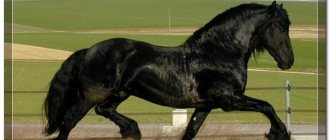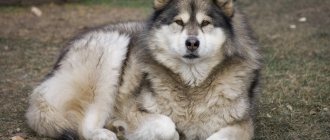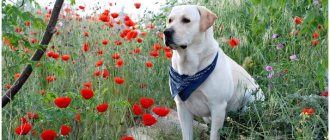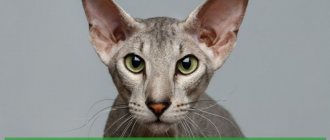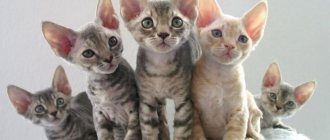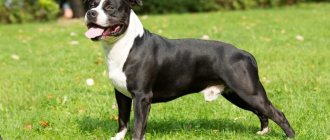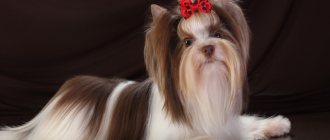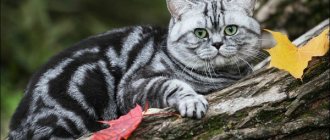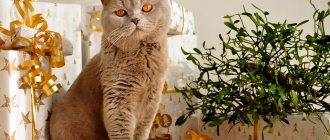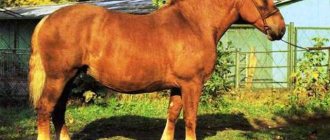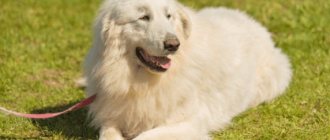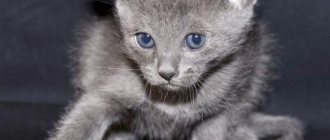People first heard about Friesian horses in the 13th century; at that time they were in great demand. These hardy horses carried knights with their armor. The character of Friesians is very calm and friendly, but if we talk about sports driving, then this breed is not very suitable. You can endlessly take pictures with these beauties and walk calmly, but their trot is weak.
How did the breed appear?
Friesian horses are among the oldest in all of Europe. Its homeland is the northern province of Holland - Friesland. Archaeologists have unearthed the remains of ancient horses (the ancestors of the Frisians). Initially, horses were completely different, this happened more than 700 years ago. In those days, the requirements for artiodactyls were somewhat different than now.
When Spain conquered the Netherlands, this happened in 1569-1648, the Frisians were infused with the blood of two types of horses (Andalusian and Barbary). This resulted in power, endurance and quick learning.
Although Friesian horses were not pure trotters, among this breed there were some individuals who trotted for a long time. Handsome and energetic friezes could move not only in harness, but also saddled.
Their beautiful posture, high endurance and strength were suitable for ceremonies. This breed of horse still decorates the queen’s golden carriage today. When the time came for kings, the paraphernalia became unnecessary, and from then on friezes were needed for riding.
Use in various fields
The frieze tolerates climate change relatively easily , which allows the owner to take part in international competitions on all continents.
- has a calm temperament , so even a rider with little experience can handle her easily.
- Submission to the owner is brought up in the shortest possible time.
- Becomes emotionally attached to one person.
- During competitions, it instantly reacts to loosening and tightening of the reins .
Frieze is one of the most intelligent, as he can perceive commands with his voice. In some equestrian sports, voice control is prohibited because not all horse breeds are as intelligent as the Friesian, giving the athlete an advantage.
Horses are widely used in cinema. They fit perfectly into the medieval setting of historical films. Circus performers love to use the Friesian breed in their acts because it lends itself well to training to perform complex elements. She can be seen during circus performances in different parts of the world.
During dressage, he steadily maintains an extended trot without going into a gallop. Successfully completes many elements in a row, without interruption. In harness competitions she has no equal in single races and in tandem. Thanks to its high gait, it easily wins competitions with obstacles, where the horse must initially demonstrate great push-off force and maintain balance during landing.
By purchasing a Friesian horse, the owner receives not only its beauty, but also its magnificent grace. He feels a sense of belonging to the era of knights and royal nobility. Riding on a black pearl, you can imagine yourself at a parade or triumphal ceremony, and feel completely new.
Description of appearance
The most important feature of Friesian horses is their absolutely black coat, without any impurities. There are also additional things that can be used to determine that it is a frieze:
- the physique is strong and muscular with correct proportions;
- the neck is long and curved;
- animal height is about 165 cm;
- the legs are beautiful, smooth and well developed, with thick hair underneath;
- elongated body;
- long and soft back;
- Spanish head;
- low withers;
- round ribs;
- long mane and bangs;
- black suit.
There is no need to cut the fur and mane, so by the age of five they have acquired it. When running fast, the wool flies beautifully against the wind.
Description and distinctive features of the breed
From draft horses, the Friesian breed has:
- powerful body;
- wide chest;
- wide back;
- developed muscles;
- shaggy leg friezes.
From Arabian horses they inherited a flexible long neck with a medium head and a graceful gait. A distinctive feature of the breed is its black color, which is why its synonymous name is Belgian Black. Another poetic name - “black pearl” - was acquired by the breed for its shiny black skin.
Appearance
A small star on the forehead is allowed only on mares. The stallion must be completely black. Horses with a different skin tone are excluded from breeding.
A long, thick black mane and an equally long tail make Friesians easily recognizable. The stallion Frederick the Great, considered the most beautiful horse in the world, belongs to this breed.
| Appearance of Friesian horses | Description |
| Height at withers | stallion - 160–173 cm; mare - 153–160 cm |
| Body length | up to 1.8 m |
| Bust | 2 m |
| Metacarpal girth | 23–25 cm |
| Suit | black |
| Head | well-developed “Spanish” head type |
| Ears | movable ears, slightly tilted towards each other |
| Eyes | expressive, large, dark in color |
| Neck | long arched neck |
| Mane | lush, thick, long mane |
| Croup | square case type |
| Tail | long bushy tail |
| Back | the back is wide, muscular with a sloping rear |
| Breast | wide chest with curved ribs; powerful, sloping shoulders |
| Legs | Moderate leg height ensures the correct center of gravity for dressage. Friezes on the legs - long, silky hair |
| Hooves | hooves are massive, well formed, level with a narrower front part |
Scope of application
Friesian horses are considered friendly, active and energetic, but also gentle and docile. The stallions are known for their lively, steppe trot. Representatives of the Friesian breed are used in the visiting team of the Queen of Great Britain, in Disneyland carriages and other amusement parks.
The traditional form of carriage in which friezes look great is the high-wheeled carriage.
The breed has a powerful general constitution and good bone structure, as well as a “baroque” body type. The main purpose of the Baroque breeds is to work under saddle in the classical school of dressage. They must be able to perform exercises that require excellent coordination and balance.
Friezes are also very popular when filming historical and science fiction films, combining a spectacular appearance and absolute tranquility in the frame. Friesians are considered the calmest horses when filming.
They perform well both in harness and when moving weights, but are not used in jumping tricks due to their large weight (600–700 kg).
Friesians are hardy and can maintain excellent shape on moderate diets. They do not require special care, but they do need attention and good walks. Due to the large size of stallions, they are comfortable to ride and resemble riding in slow motion, which is why Friesians are not used in speed competitions.
Temperament
The genetically inherent properties of draft breeds are calmness and obedience.
Did you know? The use of draft breeds in hippotherapy is due to a number of factors. The body temperature of a horse is higher than that of a person, and the muscles in the gait perform about 100 multidirectional oscillatory movements, which provides the rider with a soft warming massage of those muscles that are not used when walking.
Breeders note that Friesians are unique in their ability to develop strong friendships between horse and owner, making them ideal as a family friend.
Advantages and disadvantages
- Among the advantages of the Friesian breed are noted:
- spectacular appearance;
- calm character;
- high intelligence;
- good learning ability;
- friendliness;
- endurance and performance;
- fearlessness;
- unpretentiousness in content.
Friesians are resistant to disease and do not suffer from pathologies associated with excess weight, characteristic of draft breeds. They are highly adaptable to climate and can adapt quickly.
- Disadvantages of the breed:
- the main disadvantage is the need to carefully monitor the condition of the foot brushes and clean them of burrs “collected” during a walk;
- the appearance of the horse, including the condition of the coat, directly depends on the quality of the feed received;
- not used in horse riding for children due to its heavy weight and difficulty in handling.
Did you know? The oldest stables in the world were established by the Egyptian pharaoh Ramses II (1304–1237 BC). Horses were bred here for war, hunting and recreation. The stables were discovered in 1999 by a German-Egyptian archaeological expedition. Their area is 17,000 square meters. m. This is the largest area to date.
Character and learning ability
Friesians not only have a beautiful appearance, but also movements when running, because the horse raises its legs high. For this reason, the Friesian trot seems more graceful than that of other breeds. Grooms call this run a carriage run. On level ground, horses do not gallop very fast, but if there is snow under their feet, the running will be fast and at the same time easy.
When a breeding inspection occurs, attention is focused on the walk and trot. The pure breed has a quadruple step, that is, the horse hits the ground with its hooves 4 times in a row. When walking or jogging, your step is smooth and even.
Friesian horses are energetic, but at the same time calm and balanced. They are very durable, so they are often used to teach beginners how to ride. Horses are distinguished by kindness and humility, devoted to their owner.
Friesian horses in sports
Friesian stallions and mares have never been racing champions. However, they differ in their natural driving ability. Driving is a competition where teams of one or more horses compete in speed. Friesians, unlike many other breeds, willingly allow themselves to be put on a harness and quickly understand what is required of them. These horses are hardy, obedient, and non-conflicting, so it is easy for the driver to control the cart.
Also, due to their meek and peaceful nature, Frisians are readily used for taking staged photographs. Usually they calmly perceive strangers nearby and willingly take the desired pose in front of the lens. In many large recreation parks in Western Europe you can find Frisians pushing kids around in circles. Riding can take place both in a carriage and in the saddle. In the latter case, the owner leads the horse on which the child is sitting by the bridle.
Types of friezes
Nowadays, there are several colors of Frisians, since the experts did not intend to leave one color; they left the features of the Frisians, but changed the appearance. This allowed them to sell a lot of horses to lovers of different colors and conformations.
Today, dressage is divided into 2 types: sportive and calm. Dutch breeders focused all their efforts on breeding horses for the listed trips.
The first type, “old”, called baroque, is distinguished by a small step, a short but high neck, a short and at the same time wide body and small stature. For example, the Andalusian horse is a Baroque breed.
The second sporting type is a free-moving gait, and they are also light-boned and tall in stature. If you compare the two breeds, you can notice a big difference:
- Baroque is lower and shorter than a racing horse;
- Baroque has straight shoulders;
- the baroque height is from 145 to 162 cm, and the height of the sports horse is from 160 to 173 cm;
- the pasterns of the first variant have fewer friezes than the second.
Friesians are bred at a Russian stable called “Kartsevo”; they previously purchased sports horses because they are capable of performing original elements of riding.
Common Health and Behavior Problems in the Friesian Sport Horse
These horses are usually calm and have a gentle disposition. They behave well with people of all ages and are not easily frightened.
Unfortunately, Friesian sport horses have a relatively high rate of genetic disorders compared to other breeds. This is most likely due to inbreeding. Some of the common health problems include:
- Digestive system disorders
- Dwarfism
- Parstern dermatopathy
- Aortic rupture
Frisian suits
Somewhat earlier, there were a lot of colors of Friesian horses, even dappled ones were present. Today, they have become strict about the colors of Friesians: males must only be black without any markings, and females are allowed a star on their forehead.
The rest of the colors were exterminated, but red babies can still be born from time to time. Even though they are purebreds, everyone does not allow them to breed. Black horses are beautiful and look great in a carriage, but in the 20th century it became clear that people no longer liked large black males with long manes.
In the 2000s, a photo of a white Friesian horse appeared on the RuNet, but it is not completely white, but rather light gray. As it turned out, this is not a purebred horse, but a mixture of Friesian and Arabian breeds.
The sire of Arabian horses is the gray horse, since the gray gene is superior to other colors. Crossing an Appaloosa with a Friesian will result in a forelock color. This crossing, carried out since the 90s, helps to obtain colored stallions whose exterior will be similar to the Friesian.
Is it profitable to breed Friesian horses?
Average market value of representatives of the Friesian breed:
- foal under 1 year – $7,000–12,000;
- 2-3 year old foal - $9,000-19,000;
- stallions - $12,000–28,000;
- stallions used for breeding - $18,000–30,000;
- horses that participate in competitions - $40,000–100,000;
- successors of the breed line - $200,000–600,000.
Modern horse breeding has several directions of development.
Horses are purchased by equestrian schools and individuals for riding and participation in sports competitions. Another new area, hippotherapy, also needs calm horses that can work with a large number of people. If you have horses, they can be rented out to photographers for photo shoots, newlyweds for organizing wedding rides, private hippotherapy clinics and other organizations.
In addition, Friesians are very large horses. Restaurants are happy to purchase quantities of horse meat, as well as other types of exotic meat. Foal meat is considered dietary and is purchased for medicinal purposes.
Some farms organize their own meat processing workshops, which is a good addition to the main business, so horse breeding can be a very profitable activity. Its only drawback is the large initial investment.
Nutrition
Horses must be fed according to all the rules, since the health and life expectancy of the animal depend on the diet. Horses should be fed three times a day, with plenty of variety, and clean water should be available around the clock.
Horses
When compiling a diet, you should take into account the weight, daily load and other characteristics of the horse. If the horse was jogging, walking, or driving a carriage, then more feed will be needed to restore strength. If the horse has been sitting idle all day, then you don’t need to give a lot of food.
The table provides the daily feeding ration for one adult:
| Feed | Quantity per head, kg |
| Oats | 5 |
| Bran | 1,5 |
| Hay | 13 |
| Carrot | 3 |
| Mineral supplements | 0,2 |
| Barley | 2 |
| Salt | 0,04 |
Pregnant mares
During pregnancy, the mare must be fed properly so that she gives birth to a healthy and well-developed foal. In summer, they must graze on pasture for 6 hours a day. As for the winter months, you need to feed:
- bran;
- barley;
- oats;
- corn;
- cake;
- hay;
- silo.
To provide a pregnant mare with the necessary vitamins, she is offered carrots about 7 times a day; it is the most valuable complementary food. Sprouted grain is also necessary for a pregnant mare, since her body is replenished with vitamins A, B and E.
In addition, pregnant mares need salts, calcium and phosphorus, which allow all processes to proceed correctly. Males that do not receive enough minerals begin to chew the earth, sand, chalk, feces - all this indicates a lack of useful substances.
Features of breeding and care
Despite their unpretentiousness in maintenance, friezes still require the creation of conditions under which their properties will manifest themselves more clearly. So, after each walk, before sending the horse to the stall, it is necessary to thoroughly clean the skin, brushes, and tail of dust and plant seeds.
It will be useful for you to learn how to make a bridle, blanket and saddle for a horse with your own hands.
Their hair requires constant careful care. From time to time, the horse should be examined by a veterinarian to ensure its health.
The diet also requires special attention. A muscular stallion, like an ordinary athlete, requires nutrition aimed at building muscle mass. If the horse is a producer, then the diet must ensure high quality semen.
Mares need nutrition that promotes milk production. The foal is given a balanced diet for good development and growth.
Friezes are not intended to be kept in a herd, so special attention should be paid to their stall and stables. It should be light, warm and spacious. The minimum air temperature is +16 °C. You will also need a high-quality ventilation system with no drafts.
Did you know? The longest horse tail in the world belongs to JJS Summer Breeze from Kansas (USA). The length of the tail is 381 cm. The record was recorded in the Guinness Book of Records on 08/23/2007.
Premises requirements
The stables are designed taking into account the climate zone. So, if the normal temperature for a horse is about +16...+18 °C, then the stable is built from materials that will retain heat well.
In temperate climates with mild winters, additional heating will not be needed, but in regions with prolonged low temperatures, additional heating must be provided. The correct humidity level is 60–70%. Excess moisture is eliminated by good ventilation.
Brick is considered an excellent material for construction, but stables are also built from adobe brick and wood. The roof must be covered with fireproof covering material with high water resistance. The floor is made of adobe. This is a specific “cushion” on the ground made of layers of crushed stone, lime and clay.
Floor repairs and clay replacement are performed once a year. The floor is made inclined with a slope of 1.5 cm from the outer wall to the inside of the room. This is necessary for the convenience of cleaning urine and manure.
Natural lighting is provided through windows. The area is calculated using the formula: per 15 sq. m of floor - at least 1 sq. m windows. The height of the window is 1.8 m from the floor to exclude the presence of bright sunlight at eye level of the horse.
In the stables, two doors are installed at the ends of the building. In the middle of the stable there is a wide passage for the transport of feed for harvesting machines and the passage of horses.
The ventilation system is supply and exhaust. The diameter of the air ducts is at least 0.5 square meters. m. A special feature of the system is a two-level air duct layout: the top one is for removing light gases, the bottom one is for removing heavy gases. According to the standards, 1 exhaust pipe is needed for every 10 individuals.
A separate stall is provided for each horse. Its dimensions are 3.7 x 4.3 m. Since horses are inquisitive and sociable, the walls consist of 2 parts. The lower one, up to a height of 1.6-1.7 m, is solid - this will eliminate the appearance of drafts, and the upper one is lattice - so that the horses can communicate: see and hear each other.
The feeder is installed in the corner of the stall at a height of 1 m. In shape, it is an elongated trapezoidal box with a depth of 30 m. Length - 1–1.2 m. The width of the upper part is 60 cm, the bottom - 40 cm. A modern stable is equipped with an automatic drinker.
Horse-drawn draft horses include such breeds as Russian Trotter and Karachay.
Feeding
Only hay and grass in the Friesian diet will not be enough. The diet will definitely include grains, vegetables, and minerals. Feed distribution consists of three stages: the first - hay, the second - succulent feed and root crops, the third - grains. Horses are fed twice a day in summer and three times in winter.
The weight of feed is calculated based on the weight of the horse. For every 100 kg of weight you will need 5 kg of feed. The diet is also adjusted depending on the time of year. So, if in summer a horse can get more grass and succulent feed will be more varied, then in winter the lack of vitamins is compensated for with special supplements.
Approximate daily amount of feed (in kg):
- oats - 5;
- hay - 10;
- bran - 1;
- root vegetables - 2–3.
Friesians are big fans of sugar, so this treat should be present in your communication with your pet.
But the horse should not be fed food that causes fermentation in the intestines:
- fresh bread;
- baked goods;
- crackers;
- cookies;
- vegetables and fruits.
Horses can only eat carrots from vegetables, and apples from fruits. Vitamin supplements are necessary only if the animal’s diet is not balanced. If signs of vitamin deficiency are noticed, additional substances can be introduced into the diet on the recommendation of a veterinarian.
Important! Friesians should not be fed cow feed. They have different organization of the digestive system and different requirements for nutrient content.
In summer
In the summer, horses sweat, just like people. Together with sweat, they lose a lot of fluid, and along with it salts and some protein. Therefore, it is important that the horse always has access to water. Sweat helps remove sodium (Na), potassium (K), chlorine (Cl) and magnesium (Mg) from the body. Sodium and chloride are the main components of horse sweat.
To replenish them, lick salt must be constantly present in the feeder. Salt replaces only the sodium and chloride that the horse has lost, but if he doesn't sweat a lot, then the other components are not so important.
The bad news is that some types of food increase your pet's body temperature. After consuming this food, the horse will feel the same as if you were drinking hot tea in a sweater in the summer sun. The culprit behind the rise in temperature is protein.
A large amount of protein is found in lupine, alfalfa, and soy flour. Make sure that the total amount of protein consumed per day does not exceed 10% of the diet. This is the correct ratio for all horses that do not take part in sporting competitions and are not in the lactation period.
Too much hay can also raise your body temperature. Therefore, its amount should not be less than 7 kg and more than 15 kg per 500 kg of horse weight. The grass content can be much higher. We are talking about green and lush grass, but not dry, sun-bleached grass.
The summer water norm is up to 50 liters per day. In summer, various microorganisms multiply quickly in the water, so the drinking bowl must be cleaned regularly and the water must be fresh.
Important! Dehydration often causes colic and indigestion, so make sure your pet has constant access to clean water.
Horse care
Friesian horses are unpretentious in care and maintenance and can easily tolerate sudden changes in weather conditions and climate. Since there are lush brushes on the legs, the legs are resistant to many diseases of the lower extremities. After every walk, you need to clean your hooves.
A layer of sawdust bedding will allow the brushes on the legs to naturally dry, which will prevent the development of infections. The mane and tail also need careful care, they need to be washed and combed to keep the horse looking great.
If there is a desire and opportunity, then it will be beautiful if the owner braids the tail and mane in a pigtail, and in the morning unravels and combs them. If you don’t have free time, you can braid them for a couple of days and only then unbraid them and comb them. This will allow your bangs, mane and tail to be silky, shiny and wavy.
You can wash your tail with conditioner a couple of times a week. If the coat is black, it is brushed every day and sprayed with conditioner twice a week. Hooves are oiled and trimmed once every 45 days.
If you want your hooves to shine, you need to lubricate them with oil or a special cream. Thanks to this, the hooves will shine and the hoof horn will grow properly.
Horse management
Before buying a horse, you need to ask yourself the question: is there somewhere to put it, is there an area for walking, will it be possible to graze it and other important nuances. There are two options for keeping horses: a stable for rent or your own stable in your yard or country house.
Paid stables for rent
This option has many advantages, firstly, there is no need to clean up after the horse, feed it and generally care for it, all this is done by a hired worker. The downside is that it is not known in what hands the horse will fall; there are workers who need to be monitored all the time and directed in the right direction. Renting a stable costs a lot of money, not counting the fact that you need to regularly get vaccinations, call a veterinarian, etc. (this is paid separately).
Own stable
This way, keeping a horse is much cheaper and you can create any conditions for your pet. But constant work issues are added: cleaning, grooming, taking them out for walks, etc. It’s not difficult to build a room for 1 or 2 horses with your own hands.
If you have decided to keep an animal in your stable, you need to have everything ready before purchasing. In addition, you need a separate room where all the equipment and food will be stored separately. The main condition is a large walking area with green grass.
There are some recommendations for your own stable:
- the room should be spacious, dry and warm, and drafts should not be allowed;
- Natural lighting would be better, but artificial lighting is also possible;
- there must be good ventilation of the stable;
- the stall must be made free with a door into the lattice;
- You should consider the place for drinking water, feeders and bedding of hay.
The feeder, drinking bowl and “manger” are installed at a height where the horse’s chest ends. Drinkers and feeders should be secured well so that they do not fall while eating or drinking. The air temperature should not be lower than 16 and higher than 18 degrees, both in winter and summer.
Breeding Friesians
The small number of Frisians is due to the difficulty of breeding. A stallion can only impregnate a female in 15% of cases, but the reason for this has not yet been found. To prevent this breed from being completely exterminated, artificial insemination is used. This has its obvious advantages:
- sperm can be frozen at a certain temperature and transported to any distance;
- you can save the sperm of a young elite stallion when the horse is no longer young;
- You can fertilize a female with fresh sperm by introducing it into the mare’s vagina.
The sperm goes directly into the vagina, usually through a special tube. It is metal and lined with rubber inside. To prevent the horse from kicking, he is offered Buserelin - a substance that contains an analogue of gonadotropinol, which increases sexual desire.
The greatest activity occurs from March to June, especially during the daytime, and in winter, sexual desire slows down. To determine readiness, a pony is allowed to approach the mare; it is not as tall as the mare, but it will be clear whether she allows the stallion to approach her or not.
A mare carries a foal for more than a year (about 340 days), two days before the upcoming birth, colostrum begins to be released from their nipples, and a plug comes out of the swollen vulva. Not all Frisians can give birth on their own; many of them need help. When the muscles contract, stimulants are injected into her, and during pushing the fetus is pulled up. Sometimes the mare has to have a caesarean section.
Mucus must be immediately removed from the newborn, and the mother must be wiped with a dry, clean cloth. If necessary, chest compressions should be performed, after which life can last up to 50 years. This is how many years the horse lived in England and died in 2013.
Breeding prospects
Nowadays, Friesian horses are used as a decorative breed. Because they have a beautiful appearance, they are used as a harness for elegant carriages. They perform just as well in the park for quiet walks, because even a beginner feels great in the saddle.
Although horses are technically well suited for horseback tourism in villages, this is very rarely practiced. This happens because the bushy tail and friezes get dirty very quickly and burrs stick to them. Because of this, the appearance loses all its beauty.
Today, friezes in Russian latitudes have a narrow niche of application, so they are not very popular.
Young animals
As already mentioned, horses of this breed are not lustful, and therefore fertilization is performed in a piecemeal way. It would seem nothing complicated, but Frieza’s ovulation period can last up to two weeks, “in heat” it can be 1, maximum 2 days. And this period is difficult to calculate without an experienced veterinarian.
After successful fertilization, the foal will be born in 11 months. A month before giving birth, the mare is separated from the main herd and placed in a separate insulated stall, with a compartment for the baby. Every 2 days for a month, the litter must be changed to a new one to prevent the growth of viral diseases.
If the gestation period is normal, the mare will give birth to a foal on her own. Usually foaling takes 5-6 hours, but in difficult cases it can take up to 12 hours. If labor is prolonged, you need to call a doctor. After birth, the baby is cleared of mucus from the nose, ears and eyes and given to the mother.
She will lick the foal and tidy him up. During the first days, the newborn is fed on mother's milk. The baby is already born of the same color as the adult. Dressage of a hinny begins after 12 months. Even at this age, with a little training, Frieze will be able to win any show jumping competition.
Interesting! The life expectancy of representatives of this breed is 30 years in comfortable and cozy conditions. In the wild, the animal will last much less, since grasses and shrubs will not be able to satisfy all the vitamin and mineral needs of the horse.
These horses can gallop much longer than sports horses, although their speed characteristics are an order of magnitude lower.
Minuses
Unfortunately, no matter how beautiful and noble the breed is, it has shortcomings that are difficult to close your eyes to.
- Animals are demanding in terms of living conditions and food. With a large population, it will be difficult to “serve” all the horses.
- Despite the fact that the breed is called sports, the Friesian breed is in no way suitable for sports. The speed of horses is not as high as that of athletes on the racetrack.
- Due to its high cost and whimsical nature, the breed does not have any practical meaning for the population.
Such features of the breed, it would seem, should reduce the interest of horse breeders, but this is not the case. Now there are more than 60 thousand Friesians in the world, which is 2 times more than Mustangs.
Eventually
I would like to say about several interesting facts that relate to the Friesian breed.
- The most beautiful horse in the world is Frederick the Great. His bangs reach right up to his nose, and any girl will envy the length and silkiness of his mane. Friedrich - Friesian horse.
- Recently, the toy company Schleich released a number of Friesian horse figurines. Among them is Frederick the Great.
- The maintenance and care of horses is fully justified by the cost of the animal.
- Many people wonder whether a Friesian stallion is a heavy draft stallion or not? Officially, the breed does not belong to heavy trucks, although we should not forget that 500 years ago they were used to cultivate the land.
Many owners of these animals say that these horses are characterized by a baroque type: semicircular shapes and a color dark as night. It is interesting that no other breed was given such a characteristic.
This is what the Friesian horse breed looks like. Now the history of the appearance of these horses has become a little more known, where the breed was bred and when it was born in the form in which we know it now. Selection over Frisians is not carried out, since the main goal of hippologists was the decorativeness of the breed, which they completely achieved.
Advantages and disadvantages
There are approximately 60,000 Friesian horses today, half of them living in the Netherlands. According to statistics, this breed is considered in demand and this is due to the following advantages:
- Beautiful appearance. All over the world, Frisians are highly valued for their elegant appearance. Horses are ideal for exhibitions, celebrations, and tourism purposes. The standard color is black, but sometimes white stallions are born, but this is considered a marriage and they are not allowed to breed.
- It's comfortable for the rider. This criterion is not mentioned in the description of the breed, but as far as feedback from riders is concerned, this is a very noticeable plus.
- Calm disposition. Friezes are easy to train, obedient and loyal to their owner.
In addition to the positive aspects, there are also negative ones:
- Compliance with the regime. Although the horse is not very demanding, it still needs proper care and proper feeding for proper development, good health and beautiful appearance.
- Not suitable for sports walks. The horse is not intended for sport rides. This breed is often used in a single sport called driving.
- Long hair on the lower limbs. Since in Russian latitudes the damp climate is a direct reason for the development of fungus on the hooves.
History of the origin of the breed
The Friesian breed is one of the oldest European breeds. Initially it developed in the Netherlands, in the province of Frisian. The origins of the breed are believed to date back to the occupation of the Netherlands by Spain in the 16th century.
Spanish draft horses crossed with local horses, laying the foundations of the modern Friesian as a high-performance draft breed. During the Crusades, the draft horses that accompanied the knights were crossed with Arabian horses. As a result, their shape acquired more graceful outlines.
The Friesian breed book in the Netherlands has been kept since 1879. Now friezes are used in equestrian sports, entertainment centers for children, and for circus performances.
Reviews
Below are reviews from real people regarding Friesian horses.
★★★★★
Karpenko Vitalia, 32 years old. In our stable there is a Friesian horse purchased in Kartsevo.
Her character is very good, kind, but I don’t really like the ride quality. They can be ridden by those who no longer fall off horses, but also do not have a serious riding level; this breed is not suitable for beginners. ★★★★★
Svetlana Zarubezhnaya, Voronezh. I bought a Friesian horse in 2001; at that time, equestrian sport was just beginning, and I had never heard of Dutch horses.
Having a Frieza at a young age was cool. No matter how hard the horse tried, it was still far from our Ukrainian riding horses. It was not very comfortable to sit on it, since my neck was in the way. The frieze is more suitable for photo shoots, because the appearance is very beautiful. Soon I sold my horse and bought a sports horse, and the new owner’s horse rides through the fields and she really likes it. Hide
Add your review
Friesian horses are popularly called black pearls and for good reason, because the animal has an elegant, beautiful coat with beautiful movements. Thanks to this, horses have gained popularity throughout the planet. Today, Friesians are actively bred in the USA, Africa, Europe and Holland. As for horse racing, these horses are not used in this direction.
0
0
Copy link
Price
The price depends on the availability of pedigree and the country of sale. The main supplier of the Friesian breed is the Netherlands. The minimum price for a horse from a Dutch nursery is 10 thousand euros, excluding delivery.
There are few equestrian organizations in Russia specializing in breeding Friesians. KSK Svetozar and Kartsevo are well known in the Moscow region. You can view applicants on the websites of the complexes. How much the stallion or mare you like costs needs to be clarified separately when purchasing.
The frieze can be purchased from a private seller through online message boards. Prices for titled horses with a pedigree on purchase and sale sites range from 350 thousand to 1.5 million rubles. Owners highly appreciate the sporting achievements and abilities of their pets.
